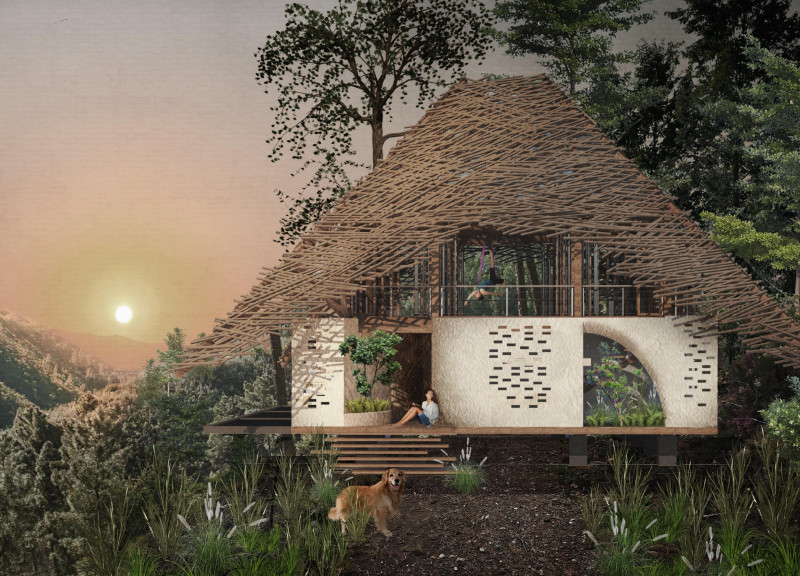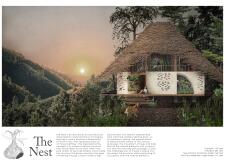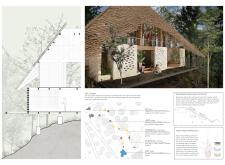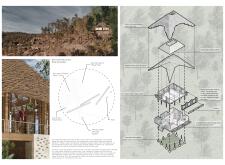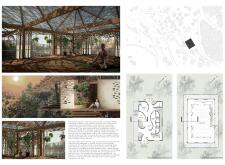5 key facts about this project
The Nest is a thoughtful structure located in the tranquil pine forests of Serra de Estrela. Designed to echo the form and function of hanging bird nests, it draws on the principles of Shinrin-Yoku, or forest bathing, to create a space focused on wellness. The overall design aims to foster a strong connection between occupants and their natural surroundings, offering a retreat that emphasizes tranquility and mindfulness.
Site Integration
The layout complements its natural setting with open spaces that replicate the experience of wandering through a forest. Natural light floods the interior, creating a warm and inviting atmosphere. The shifting interplay of light and shadow engages the senses, encouraging users to immerse themselves in the environment and find a moment of peace.
Zen Garden Pathway
A Zen garden leads the way from the original Vale de Moses to the new yoga shala. This pathway enhances the experience of forest bathing, blending existing trails into the architectural design. Throughout the garden, elements such as large rocks symbolize strength, and stepping stones encourage personal reflection, enriching the thematic essence of the project.
Material Choice
The design incorporates locally relevant materials that reflect sustainable practices. Timber, steel, and plaster-finished masonry walls are used to create a sense of place that fits within the regional context. The roof features polycarbonate panels, allowing soft daylight to enter the space. This choice not only enhances visual appeal but also supports thermal comfort while being mindful of the environment.
Interior and Functional Spaces
Inside, the design focuses on a variety of functions, balancing communal and private areas. Built-in seating, an outdoor kitchenette, and zones for reading and meditation cater to different needs. Bathrooms and showers overlook private gardens, providing added comfort. This careful consideration of space ensures that the environment is both welcoming and practical.
The timber structure on the roof continues the relationship with nature, allowing light to filter through while creating an inviting environment that encourages quiet contemplation and connection to the surrounding landscape.


